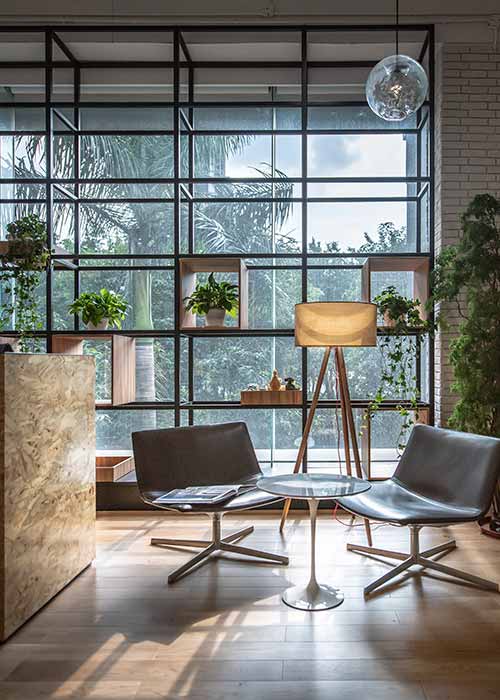Choosing the right architectural details will help boost natural light while cutting down glare.

[Photo: Courtesy of M Moser Associates]

As director of M Moser Associates, Christine Bruckner brings her experience with urban integration, revitalization, and design excellence to guide the development of our built environment at all scales. The 2018 WSLA recipient is an architect actively supporting best practice, sustainability, and wellness in design. Here, she looks at how creating subtle, uplifting experiences for people within a space improve health and well-being as well as productivity.
It’s no secret that spaces with natural light and outdoor views improve quality of life. Research from doctors highlighting the interconnection of our circadian rhythms with the amount of daylight we see has led the International WELL Building Standard to require at least four hours of natural light each day be provided in interior environments. Designing clerestory zones with unobstructed windows around a space is a solution M Moser not only offers to clients but also implements in its own offices to allow the natural light needed into interiors, thereby reducing stress while raising spirits—individually and collectively.
This uplifting spatial experience has a direct impact on well-being at a spiritual and physical level, both of which are directly correlated with human performance and happiness in a space. Studying architectural “details of lightness” in design—something I have personally pursued for decades—has infused our work through transformative projects of all scales.

The M Moser office in Guangzhou, China, is LEED- and WELL-certified. [Photo: Courtesy of M Moser Associates]
In addition to maximizing the quantity and melanopic-color quality of light to enhance multiple human systems like sleep, immunity, and engagement, the architectural integration of light plays a powerful role in uplifting the soul. When light is introduced to seemingly float a roof, dematerialize a corner, or flow through the interstices between elements, these details serve to open and release traditional spatial enclosure. As a consequence, details of light can imbue freedom, stimulate self-reflection, and empower people.
These architectural details—complemented by the design of energy-efficient sensor-integrated, full-color rendition dimmable lighting—can be fully integrated to maintain a glare-free environment that both augments natural light and supports various lighting levels, spanning from brighter workplace options to dimmer renewal spaces that are critical to reducing stress and improving well-being.
Read more in the July/August issue to understand how the invisible details of sound are equally important to consider in the design, construction, and operation of environments that enable people and businesses to meet their needs and exceed their potential.

